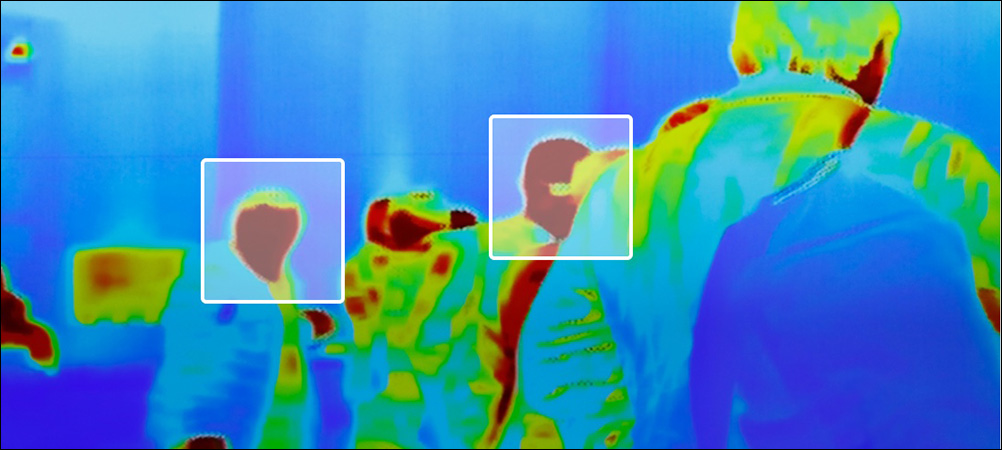Presented here are news announcements made during the past week regarding the following organizations: Safedome, NXP Semiconductors, Mastercard, Xiaomi, Kerlink, TagoIO, Kogniz, KORE, Dexcom, the Industrial Internet Consortium, and the IoT Alliance Australia.
Safedome Offers Bluetooth-Based Contact-Tracing Tech
Safedome has announced that it is utilizing Bluetooth-based tracing technology to offer businesses a way to keep employees and customers protected, by having personnel wear a proximity-tracking card to monitor for possible COVID-19 contagion. The card and contact-tracing platform, known as Contact Harald, does not require the use of Wi-Fi, apps, smartphones, IT installation or charging, the company reports, and it is designed to protect users’ personal information.
Based in Australia, with offices in Singapore and San Francisco, Safedome has built millions of Bluetooth-enabled trackers throughout the past seven years. The company is focused on contact-tracing solutions during the pandemic, and says its team developed Contact Harald to help stop the coronavirus’s spread. The name “Harald” derives from the name of an ancient king of Denmark, who had been nicknamed “Bluetooth.”
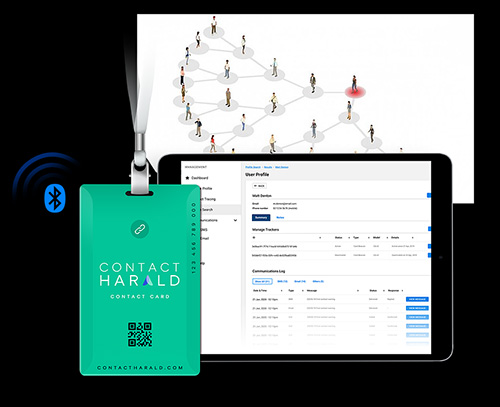
With public health impacting day-to-day business, a growing number of organizations are turning to contact tracing to keep their operations running without disruption. The challenge many companies face, Safedome notes, is in regard to the IT infrastructure and complexity involved. With the Contact Harald system, the company reports, every individual is issued a unique, secure and registered contact card that contains no personal information. If an employee tests positive or reports COVID-19 symptoms, proximity data is then uploaded from the card. According to the company, all information remains encrypted and secure, utilizing the platform.
The Bluetooth technology in the card records when two or more people come within close proximity (less than 6 feet) to each other for more than two minutes. If an employee tests positive for COVID-19, al contacts tracked in close proximity to that worker are immediately notified to get tested and remain isolated until the results are available. Safedome intends for the system to be used across a range of industries, such as healthcare, manufacturing, warehouses and educational institutions.
“With further hotspots emerging across the country, the nature of this virus makes getting back to work rather complicated,” said Matt Denton, a former Apple designer who helped to create the Contact Harald platform, in a prepared statement. “Designed with speed and accuracy at its heart, this unique platform can quickly identify, contact and isolate any potential sources of infection,” he added, noting that the green cards offer a visual compliance cue that can foster staff morale and visitor confidence.
NXP, Mastercard, Xiaomi Expand Contactless Payments in Europe
NXP Semiconductors, Mastercard and Xiaomi have announced that they are bringing contactless technology to Russia as part of a European-wide rollout of NXP’s mobile wallet solution. Powering mobile payments for Xiaomi’s Mi Smart Band 4 NFC wearable devices, NXP’s mWallet 2GO is intended to address OEMs’ need for secure and scalable wallet implementations. According to the companies, the system enables payment devices by digitizing bank cards and offering smooth NFC transactions at the point of sale.
The companies have provided tap-to-ride mobile transit experiences in Beijing, Guangxi, Shenzhen and other Chinese cities containing busy metro stations and public bus lines. “Xiaomi and NXP have cooperated in the promotion of innovative mobile payments in China since 2012,” said Quanxin Wang, Xiaomi’s general manager of international product and technology, in a prepared statement. “Extending our collaboration into Europe reflects the increasing focus on mobile lifestyles by people around the globe.” With NXP’s mWallet 2GO mobile-payment solution in Xiaomi fitness bands, users can add bank card information to the Mi Fit app on Android- or iOS-based mobile devices. Mi Pay features NXP’s embedded Secure Element technology so purchasers, payment card issuers and Xiaomi wearable users can provide security for secure payment transactions.
“NXP is the first in the industry to offer the full scope of mobile wallet development with mWallet 2GO,” said Rafael Sotomayor, NXP’s executive VP and general manager of connectivity and security, in the prepared statement. “As the worldwide impact of COVID-19 leads to an increase of contact-free transactions at a rapid pace, NXP’s leading hardware technology, software and ecosystem integration bring convenient and secure contactless payments to Xiaomi and other mobile devices.”
The solution includes an mWallet 2GO wallet software developer’s kit, a wallet server integrated with Mastercard’s Digital Enablement Service and similar tokenization platforms, Secure Element management services, NFC and Secure Element modules, NFC middleware, an SE JavaCard operating system and SE applets. NXP’s NFC+SE modules in the mWallet 2GO are designed to protect users against fraud, the companies note.
Kerlink, TagoIO Integrate IoT Technologies for Cloud-Based Platform
Kerlink, a provider of Internet of Things (IoT) solutions, and TagoIO, which offers a cloud-based platform that integrates IoT dashboards, analytics, storage, notification, devices and user-management functionality, have announced that Kerlink’s Wanesy Management Center has been integrated with TagoIO’s IoT platform.
TagoIO’s cloud platform is designed to facilitate IoT network setup and operation, the company explains. Under its platform-as-a-service model, TagoIO provides such IoT network functionalities as device management, data storage, real-time data visualization, user management, custom analytics and notifications. The platform connects businesses, developers and users, the firm reports—and unlike dashboards, it utilizes a database of devices with a preformatted payload setup that facilitates integration.
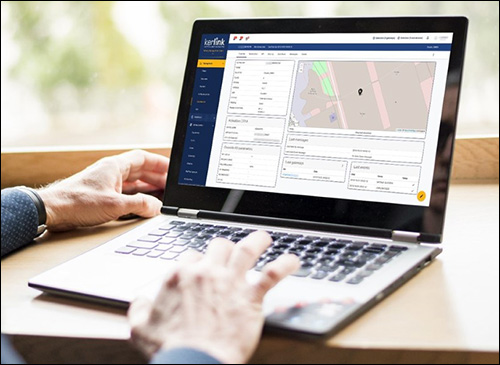
“Through this new integration, developers are now able to easily build IoT applications for a wide range of verticals, including asset tracking, cold chain management, smart cities, smart agriculture, predictive maintenance and others,” said Fabio Rosa, TagoIO’s CEO and founder, in a prepared statement. “This has only been made possible by the hundreds of different LoRaWAN sensor models, such as temperature, pressure, location, gas, light, humidity, energy, and level sensors, certified to run on TagoIO and to communicate with the open interface on the Kerlink LoRa network server.”
“Integrating Wanesy Management Center in TagoIO’s innovative end-to-end cloud platform proves the robustness and reliability of Kerlink’s software services,” added Carlos Briceño, the VP of Kerlink Americas, in the prepared statement. “This platform opens the door to another way for developers to think about IoT applications development, making it faster and easier.”
A dedicated application programming interface has been created to link IoT network data securely between Kerlink’s Wanesy Management Center and TagoIO’s platform. As developers perform the setup, data from network sensors can create dashboards, reports and notifications, and it can be integrated with other systems.
Kogniz Launches AI Solution for Safe Return to Work
Kogniz, a provider of security and machine-learning solutions, has announced that it is launching an artificial intelligence (AI) platform to help get employees back to work and keep them safe and healthy during the current COVID-19 pandemic. The company’s Health Response Platform is an automated system that offers no-contact, high-volume temperature screening, contact tracing, social distancing enforcement, mask detection and other functionalities.
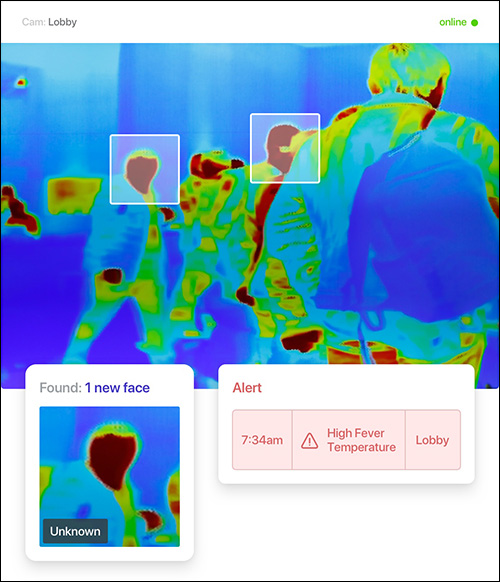
“People are eager to resume work,” said Daniel Putterman, Kogniz’s co-founder and co-CEO, in a prepared statement. “As we slowly start to reopen communities around the world, employers have an ethical obligation to safeguard employees, guests and their communities. Our solution enables organizations from big box stores to campuses to operate as safely and efficiently as possible.” The platform includes:
- No-contact, multi-person, real-time temperature monitoring: The platform measures body temperatures of large groups of people entering a building from up to 16 feet away and provides accurate results, even if it is cold or hot outside.
- Enforcement of social-distancing rules: An optional extension enables existing surveillance cameras powered by the platform to send alerts to designated personnel if too many individuals are in a given space, thereby enabling organizations to enforce social-distancing protocols.
- Contact exposure detection: An optional extension enables existing platform-powered cameras to identify those who come into contact with people displaying symptoms.
- Mask detection: This function ensures that workers and guests follow protective gear policies.
- Minimal hardware: A small footprint and flexible topologies enable businesses to quickly install the platform and begin using it.
Prior to launching the platform, Kogniz’s AI researchers developed the necessary detection algorithms and customizable rules. The system protects food processing plants, warehouses, government centers, office buildings and other installations. “Companies are extremely cautious and concerned as they plan to reopen. Employees should expect significant changes, including wearing masks, greater distances between desks, and rotating office time,” Putterman explained in the prepared statement. “Powerful yet unobtrusive technology like ours provides an additional layer of protection that will make the return to work safer and healthier for everyone.”
KORE, Dexcom Partner on IoT Patient-Monitoring System
KORE, a provider of IoT technologies, has announced a partnership with Dexcom, a supplier of continuous glucose monitoring (CGM) systems, to offer a remote patient-monitoring solution designed to assist care providers during the COVID-19 pandemic. Using Dexcom’s G6 CGM system, the firm reports, healthcare professionals can reduce their use of personal protective equipment (PPE) and the number of in-person glucose-level checks for patients receiving hospital care for COVID-19.
In order to monitor the glucose levels of patients being treated for the coronavirus, healthcare professionals must equip themselves with fresh PPE for every visit. Patients on insulin require several glucose checks daily, up to one per hour, meaning multiple PPEs must be discarded each day for every patient. With hospitals and healthcare workers already experiencing a shortage or lack of proper PPE, the risk of exposure and infection grows significantly, as do associated costs.
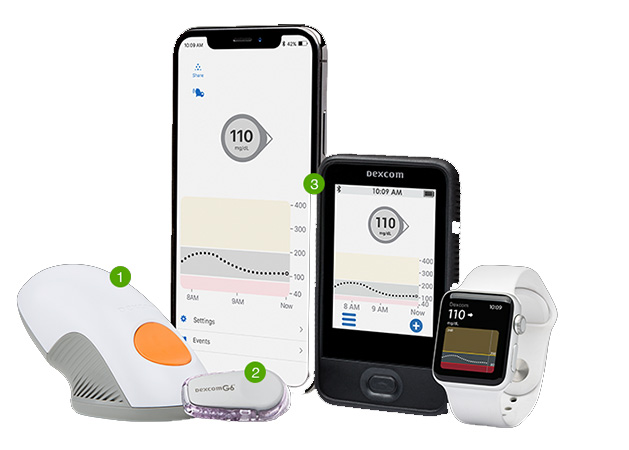
Dexcom says its solution allows for continuous glucose monitoring by measuring levels automatically every five minutes, then transmitting the collected data to a handheld mobile device that can be accessed from a safe distance. Healthcare professionals can thus monitor blood glucose levels remotely, using only one set of PPE daily to change out the device, or if immediate intervention becomes necessary.
“Doing all that we can to support the health and safety of the patients and healthcare workers currently battling this novel virus is a top priority for our company,” said Matt Dolan, Dexcom’s senior VP and general manager, in a prepared statement. “It’s our hope to reduce their exposure, eliminate unnecessary waste of limited PPE supplies, and improve the efficiency of the hospitals who are treating these patients.”
Dexcom and KORE launched the solution quickly so as to maximize protection for those areas that need it most. “KORE Health was able to procure fully certified and ISO-compliant devices, complete engineering testing and approval, identify connectivity solutions and deploy the first wave of equipped devices in just over a week—ensuring rapid speed-to-market for this critical solution,” added Bryan Lubel, the company’s executive VP of IoT managed services, in the prepared statement.
“We are in an unprecedented situation and the KORE team is looking for ways to help,” Romil Bahl, KORE’s president and CEO, said in the statement. “When the Dexcom team approached us to help in short timeframes, our healthcare team was up to the challenge. We are honored that our knowledge and experience in connectivity and device procurement, certification and deployment is playing a role in this innovative solution and that we are able to help in the global war against COVID-19. Our greatest thanks to both Dexcom and our front-line warriors as they take on this invisible enemy.”
Industrial Internet Consortium, IoT Alliance Australia Publish Digital Transformation White Paper
The Industrial Internet Consortium (IIC) and IoT Alliance Australia (IoTAA) have announced the publication of a white paper titled “How Digital Transformation and IoT Can Contribute to the U.N. Sustainable Development Goals” (UN SDGs). The document outlines how digital transformation can support relevant United Nations SDGs by including them in the strategic planning and execution of digital transformation activities. The paper’s authors advocate using a model-driven approach to define and execute a digital transformation strategy.
“UN Sustainable Development Goals provide a framework for an organization to improve their environmental impact, health and social justice, but the framework doesn’t provide guidance on how to build the goals into corporate strategy or demonstrate how digital transformation can help in achieving those goals,” said IIC member Peter Klement in a prepared statement. “This white paper provides a high-level approach to embed UN SDGs into the strategic digital transformation initiatives of every organization.” Klement is an associate partner at DXC Technology and one of the white paper’s authors.
UN SDGs include 17 interconnected goals to achieve a sustainable future to protect the planet, ensure public health and help economies prosper by 2030. An organization can impact the outcome of its digital transformation initiative by using UN SDGs to shape business strategy and goals. Strategy tools, such as the Object Management Group Business Motivation Model and the Balanced Score Card, can help an organization incorporate UN SDGs into their existing strategy planning and execution frameworks, according to the paper’s authors. A Digital Architecture Model helps an organization document its current and future business operating models and its technology landscape, as well as the associated strategic architecture roadmap.
“By using modelling tools and UN SDGs to strategize and refine their business practices,” said Frank Zeichner, CEO of the IoTAA & Knowledge Economy Institute, in the prepared statement, “an organization can then answer such questions as ‘How will my service or operation benefit sustainability or how can I engineer the best sustainability outcome of my design or implementation?’ This combination has already proven successful in industrial operations, protecting the health and safety of operators and reducing the carbon footprint of diesel generators, to name a few examples.” Zeichner is also among the white paper’s authors.

